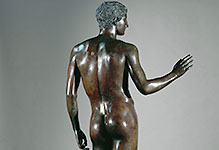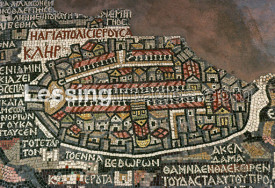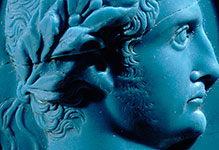
Antiquity
Ancient Egypt, Ancient Greece, Imperial Roman Period, Ancient Middle East.

#030301 8
Gold bowl, from Ur,Southern Iraq,2600-2400 BCE. It was found in the Queen's Grav...

#030301 9
Shell plaque from Ur, showing two rams.From the grave of Pu-Abi, see 03-03-01/8....

#03030110
Ostrich egg and jar found by Leonard Woolley in the cemetery at Ur. In antiquity...

#03030111
Sceptre from Ur,Mesopotamia,2600-2400 BCE. Found by Leonard Woolley in the large...

#03030112
A child's diadem, found in one of the simpler graves at the cemetery of Ur,Mesop...

#03030113
Steatite jar, from Ur,southern Iraq, 2600-2400 BCE. This bowl demonstrated the e...

#03030114
Stone basin, Ur, southern Iraq, early Dynastic period, 2600-2400 BCE. Soft stone...

#03030115
Silver jar, from Ur, southern Iraq, 2600-2400 BCE. This spouted silver jug comes...

#03030116
A set of Hematite weights from Ur, southern Iraq, 1900-1600 BCE. Hematite was co...

#03030117
Gypsum head of a man, from Sippar, southern Iraq, early Dynastic period, 2500 BC...

#03030118
Stone statue of Kurlil, responsible for building work on the temple of Ninhursag...

#03030119
Pottery jar, Mitannian, from Alalakh (modern Tel Atchana,Syria. Thie distinctive...





